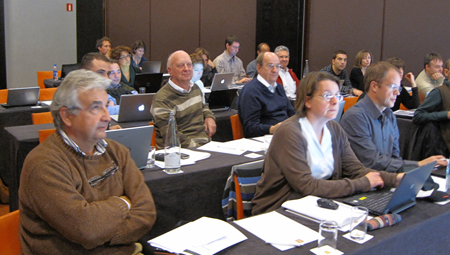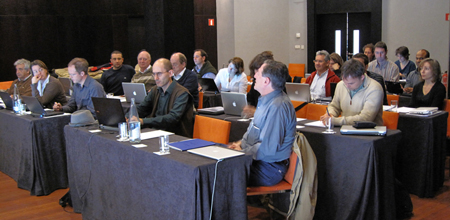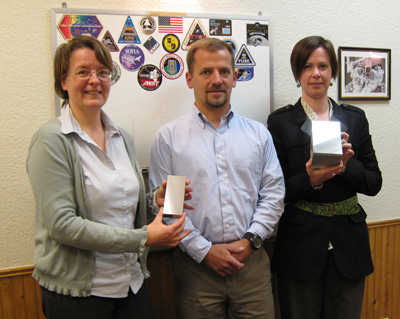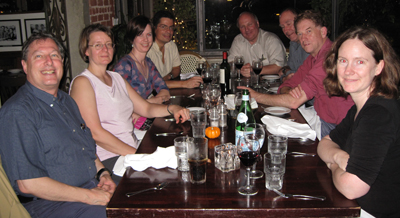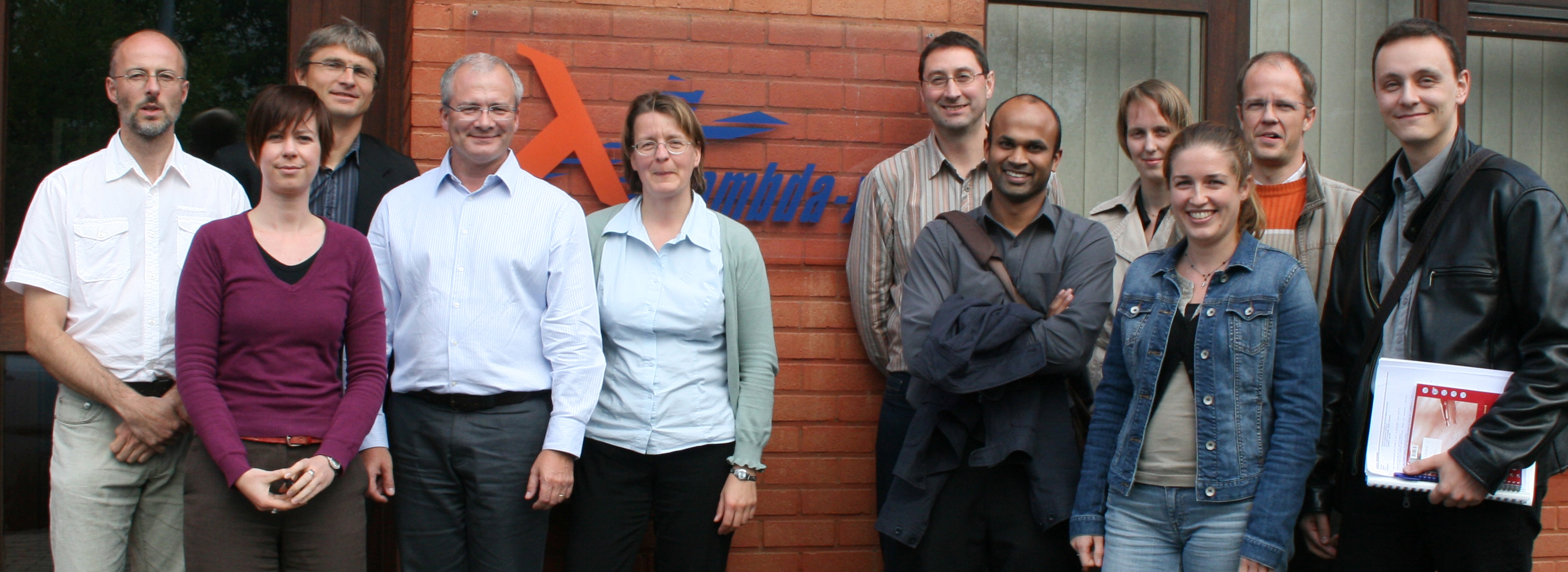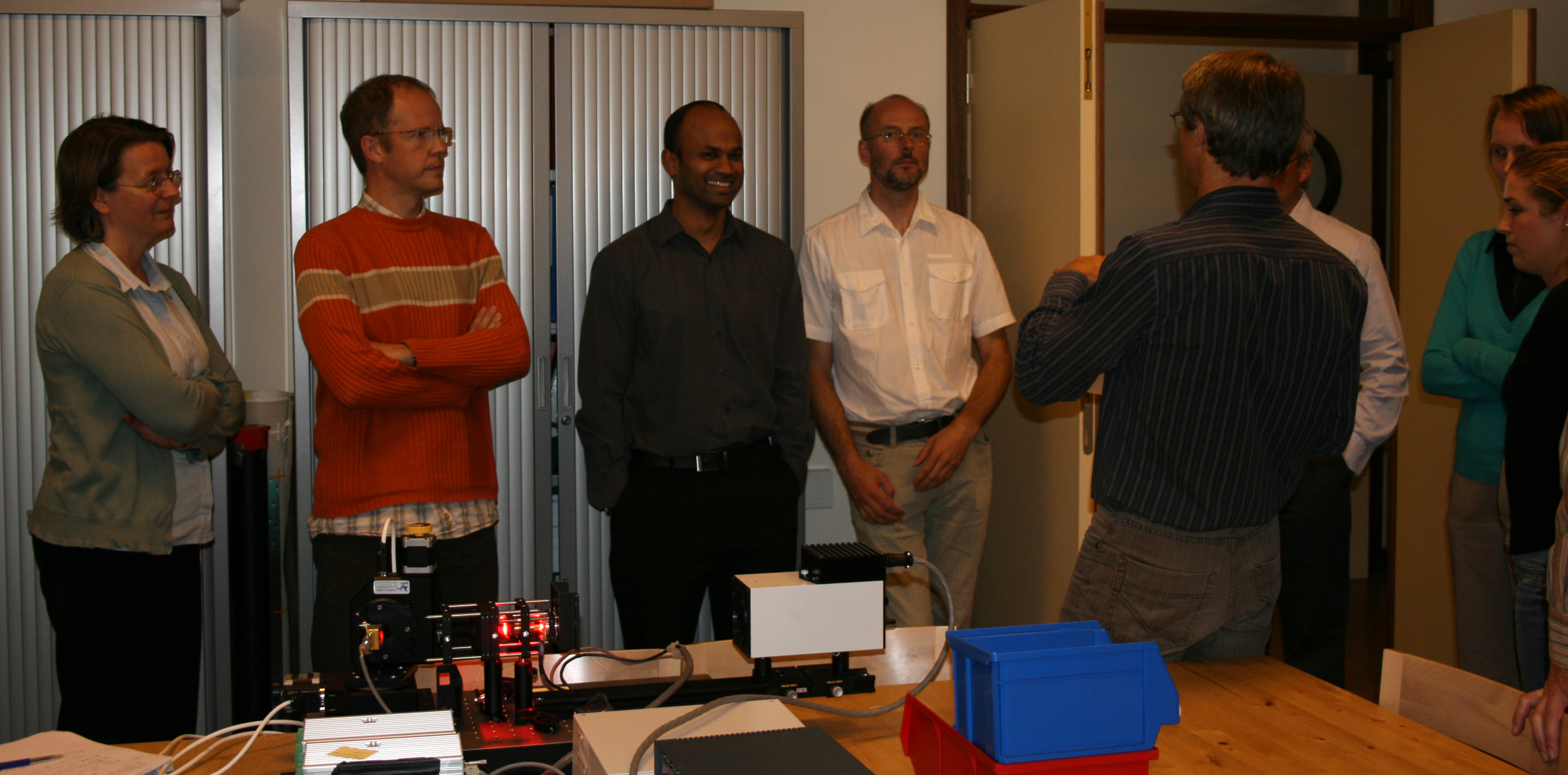 |
||||
|
Webstory: 2010 3 December 2010 30 November and 1 December marked the first NOMAD Science Working Team meeting. It took place in Granada, Spain where our collaborators at IAA are based. Co-PI Jose Juan Lopez-Moreno did a wonderful job of organising the workshop and his warm welcome was much appreciated. The location was beautiful, but the weather somewhat disappointing. Lots of rain is uncharacteristic for December there; of course northern Europe was dealing with snow chaos! On the first day presentations covered details of the SOIR instrument on Venus Express and the UVIS instrument as developed for the ExoMars Humboldt package. BISA engineers gave an update on the technology developments underway for NOMAD and our PI Ann-Carine presented the status of the project in terms of management, funding and responsiblities. We then heard from representatives from each contributing institute about the work they are currently doing on various other data from instruments observing Mars. There were ground-based studies, analysis of instruments from Mars Express and discussion of different models run at the different institutes. We also discussed the other instruments on the Trace Gas orbiter, the orbit being used and all the science that would be possible with the instrument suite. Above all, this was the first time we all met each other, having previously communicated only by email. The conference dinner was a lively, fun affair at the Mirador San Nicolas opposite the imposing Alhambra. The pictures here show the workshop at the end of day two, during the final wrap up presentations. 18 October 2010 Last week 3 important meetings were held in the United States. The first was with a company that built a vital part of the SOIR instrument for Venus Express and who we would like to build the same part for the two NOMAD infra-red channels - Bach Research. They are based in Boulder, Colorado - a small town in the Rockies. The next meetings were held at the Jet Propulsion Laboratory - a NASA research centre run by the California Institute of Technology and based just outside Pasadena in California. Three NOMAD team members went out to these meetings: NOMAD PI (Principle Investigator) Ann-Carine Vandaele, Deputy Project Manager Rachel Drummond (both from IASB-BIRA) and a representative of our prime industrial contractor (OIP), Lieve de Vos. Our meeting with Bach Research was very interesting. The SOIR grating was their first grating for a space mission, but since then they have been involved in many space projects and have made incredible developments that will be of use to the NOMAD project (and maybe others that OIP are working on - Lieve was very pleased to have met them). Here are Ann-Carine and Rachel with Kirk Bach - Vice President of Bach Research, along with 2 example gratings built in Boulder.
The first meeting at JPL was the kickoff meeting. This was the first time that we had met the PIs of the other 4 instruments that will be on the trace gas orbiter. The presentations covered how NASA and ESA will manage the project on either side of the Atlantic and how reviews will be run. Then there were more technical disucssions about joint observations and conflicts between instruments in terms of power and telemetry requirements. On the second day we attended the first Orbiter Science Working Team (OSWT) meeting. This was a much smaller group and we talked in more detail about how the instruments would be generating data and how this would be processed on the ground after reception. This continued into a spectroscopic discussion between NOMAD team members and the other 2 teams who have spectrometer instruments. We even managed to visit the clean room where the latest Mars rover was having an instrument inserted into it. Very exciting to see! We all went out for dinner in Pasadena - as seen in the photo below.
10 Sept 2010
Part of the NOMAD instrument suite is a UV - Visible spectrometer developed by the Open University in the UK for the (cancelled) ExoMars lander mission. For the new ExoMars Trace Gas Orbiter project we are seeking expertise in Belgium to update thermal, mechanical and optical models of this instrument, and adapt it for use on an orbiter. This involves the design of new entrance optics (small telescopes for nadir and solar viewing). For this, we went to visit Lambda-X in Nivelles, a company whose expertise in optical design and development has already won them contracts from many companies, and from the European Space Agency. They showed us designs they have previously worked on and gave us a tour of their facilities. Then the UVIS experts from the UK presented their instrument designs to Lambda-X and we discussed which parts of the project they could help out with. The meeting was very productive and we are looking forward to a constructive collaboration.
5 august 2010 ExoMars as a mission concept has existed for a while and has gone through various redesigns due to budgetary problems. The latest development is the splitting of the ambitious Mars exploration comprised in ExoMars into 2 missions. The ExoMars missions are a collaborative effort between ESA and NASA, with each agency supplying parts of the missions. Ffor TGO, NASA and ESA carried out their first ever joint instrument selection. This meant that teams such as the one here at BIRA-IASB had 3 months from 15 January 2010 when the Announcement of Opportunity appeared online to prepare a document explaining everything their instrument could do, what it would weigh, what power it needs and who would pay for it, build it and analyse the data that comes back from it. This was very intense work for a small team of scientists and engineers here at BIRA-IASB and in our partner institutes across Europe and the American continent. In total 19 teams sent in a proposal. NASA and ESA analysed these proposals for scientific merit, technical feasibility and risk. In the end, 5 instruments were chosen: The celebration was huge; but now the real work of building the instrument to the very stringent space requirements begins. We are all excited and just a bit apprehensive of the amount of work ahead. News & press releases 2014 & 2015
|
|||
